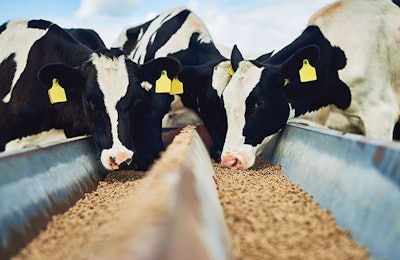Uganda’s National Agricultural Research Organisation (NARO) has unveiled two major initiatives to transform the country’s dairy sector—importing high-yielding dairy cattle from Kenya and launching its newly registered Anti-Tick Vaccine, NAROVAC.
The organisation says the breeding project is part of a wider plan to boost milk production and create more resilient herds suited for different agro-ecological zones.
According to Dr. Halid Kirunda, Director of Research at the Mbarara Zonal Agriculture Research and Development Institute (MBAZARDI), the programme will guide cattle improvement across the country.
A nine-member committee bringing together experts from NAGRIC, Heifer International, SNV, farmers, breeders, geneticists, and economists has been set up to lead the initiative.
“We are setting up a composite breeding centre that will serve as the foundation for producing stabilised breeds suited to different regions of Uganda,” Dr. Kirunda explained.
The strategy will crossbreed East African short-horned Zebu, Friesians, Jerseys, Gansu, and Ayrshire cattle with local Ankole long-horned and Nganda breeds to create hardy, high-yielding animals that can thrive in areas such as Karamoja and Buganda.
As part of the rollout, NARO has already selected cattle from ten pedigree farms in Kenya, identifying Friesians, Jerseys, Ganze, and Ayrshire breeds as the most suitable.
“We are bringing in four key breeds—Friesians, Jerseys, Ganze, and Ayrshire—and only awaiting completion of the infrastructure before the cattle arrive next week,” Dr. Kirunda noted.
The imported animals, already in-calf, are expected to produce 25–30 litres of milk daily, with some capable of yielding up to 50 litres.
“By the end of seven months, we expect to have over 200 cattle on site,” he added.
Running parallel to the breeding programme is the registration and rollout of NAROVAC, NARO’s Anti-Tick Vaccine, which recently completed an extensive approval process.
The vaccine was tested through concept validation, station-based clinical trials (with 75% efficacy), and confined field trials across MBAZARDI, Kiburara, Isimba, Maruzi, and Mbwizardi in Karamoja.
The results showed an integrated 97% efficacy and effectiveness rate.
“The vaccine was also subjected to safety assessments, and no adverse effects were recorded,” Dr. Kirunda confirmed.
Pending final approval from President Yoweri Museveni, distribution is expected to begin in December, starting in regions worst affected by tick infestations.
Together, the cattle import programme and NAROVAC vaccine are expected to revolutionise Uganda’s dairy industry—boosting milk yields, protecting farmers from tick-borne losses, and strengthening food security nationwide.















